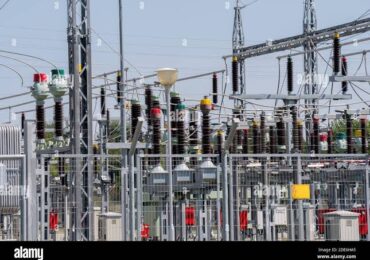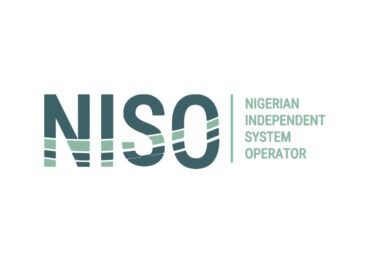OPINION: Is Decentralization the Key to Ending Nigeria’s National Grid Collapses?
6 min read
By Realwan Okpanachi
Nigeria’s power sector has long been plagued by inefficiencies, underperformance, and frequent disruptions. One of the most prominent manifestations of these challenges is the continuous collapse of the national grid.
In recent years, power outages resulting from grid failures have become almost routine, severely impacting the economy, businesses, and the daily lives of millions of Nigerians.
Continuing this trend, the national grid experienced another collapse on Monday, 14th October 2024, marking the sixth time this year that residents were plunged into total darkness.
According to data from the Nigerian System Operator’s portal (niggrid.org), as of 7:00 PM on 14th October 2024, the grid recorded an unprecedented zero megawatts (MW) output, with all 22 generation companies (GenCos) completely shut down.
As these grid collapses persist, the conversation around decentralizing the national grid has gained momentum. Could decentralization be the key to resolving Nigeria’s electricity woes?
This article explores the causes of the national grid collapses and argues that decentralization could play a crucial role in addressing these systemic failures and providing a reliable electricity supply.
Understanding Nigeria’s National Grid and Its Challenges
The Nigerian National Grid is a centralized network responsible for generating, transmitting, and distributing electricity to consumers across the country. Managed by the Transmission Company of Nigeria (TCN), the grid has long been under immense pressure due to several factors:
Aging Infrastructure: Decades of underinvestment in grid infrastructure have left the national grid with outdated and overstretched equipment. The grid’s transmission capacity is significantly lower than the country’s electricity generation potential, leading to frequent bottlenecks.
Load Rejection by DisCos: Load rejection by Distribution Companies (DisCos) critically exacerbates the already fragile state of Nigeria’s national grid, contributing directly to frequent grid collapses.
This phenomenon leads to grid instability, strains transmission infrastructure, disrupts demand forecasting, and increases operational inefficiencies across the power sector.
To address this problem, Nigeria needs to invest heavily in upgrading the distribution network, improving demand forecasting and coordination between DisCos and TCN, and implementing stronger regulatory oversight to ensure DisCos accept their allocated loads.
Without these interventions, load rejection will continue to undermine efforts to achieve a stable and reliable electricity supply for Nigeria.
Centralized Structure: The national grid is heavily centralized, meaning that power generation and distribution are coordinated from a single control point. This concentration of control leaves the system vulnerable to large-scale outages, as problems in one part of the grid can have cascading effects nationwide.
Insufficient Power Generation: Despite recent improvements, Nigeria’s power generation capacity remains significantly below demand. A substantial portion of generated power fails to reach consumers due to transmission losses and inefficiencies.
Reports indicate that Nigeria currently generates around 11,165.4 MW of power, with an available capacity of approximately 7,139.6 MW. However, it can consistently transmit only between 4,000 MW and 6,000 MW, while distribution averages around 4,094.09 MW.
Furthermore, Nigeria has one of the lowest installed capacities per capital among countries of similar size, contributing to its lower electricity access rates. For instance, Mexico boasts an installed capacity exceeding 80,000 MW with an actual generation of around 60,000 MW, while the Philippines has an installed capacity of 24,000 MW and an actual generation of about 15,000 MW.
These figures highlight the disparity in energy infrastructure and access between Nigeria and its counterparts.
Operational Inefficiencies: Poor maintenance, lack of coordination, and technical inefficiencies within the TCN have contributed to repeated grid failures.
Power plants often operate below capacity due to gas supply constraints and inadequate maintenance of transmission lines.
Vandalism and Infrastructure Destruction: Vandalization of critical power infrastructure has been another major culprit. For instance, TCN attributed the collapse of the national grid on 11th December 2023 to the vandalization of the Gwagwalada-Kukwaba-Apo 132kV transmission line.
The Impact of National Grid Failures
Frequent power outages have far-reaching consequences for the economy and society. Industrial operations, small businesses, and households are often left in the dark, forcing many to rely on costly and polluting alternatives such as diesel generators.
This reliance drives up production costs, inflates energy prices, and negatively affects Nigeria’s competitiveness in the global market.
Moreover, grid collapses undermine investor confidence, particularly in sectors like manufacturing and tech, which rely heavily on reliable electricity. The power crisis also disrupts essential services, including healthcare and education, making it difficult to deliver basic services reliably.
Why Decentralization May Be the Solution
Given the persistent failures, decentralization of the national grid could provide a long-term solution. Decentralization involves breaking up the current centralized system into smaller, independently managed grids—often referred to as mini-grids, micro-grids, or regional grids—that would operate independently or in tandem with the national grid.
The recent constitutional amendment allowing for energy federalism marks a potential turning point. Energy federalism refers to a governance approach in which power and responsibilities related to energy production, distribution, and regulation are decentralized and shared among different levels of government, typically between federal and federating units.
If implemented effectively, energy federalism could address the national grid’s failures and pave the way for a sustainable energy future.
By decentralizing control and allowing states to manage their own electricity systems, Nigeria has the opportunity to create a more resilient, reliable, and innovative power sector. However, the success of this approach will depend on careful planning, capacity building, and cooperation between federal and state governments.
Benefits of Decentralization
Increased Resilience: Decentralized grids are less vulnerable to large-scale collapses. Power generation, transmission, and distribution managed at the regional or local level means a failure in one part of the system would not necessarily affect the entire country.
Tailored Solutions: Local grids can respond more effectively to the specific energy demands of their regions, providing tailored solutions that better address the needs of various communities.
Encouraging Investment: Decentralization can attract private investment by allowing companies or communities to build and manage their grids. This would reduce reliance on the inefficient national grid and create competition, leading to improved service delivery.
Renewable Energy Integration: Decentralized grids are well-suited for incorporating renewable energy sources like solar, wind, and hydro. Regions with abundant renewable resources, particularly in the north, could develop localized solutions, contributing to Nigeria’s overall energy mix.
Reducing Transmission Losses: Decentralization minimizes the distance electricity must travel, reducing losses and improving efficiency.
Challenges of Decentralization
While decentralization offers several advantages, challenges must be considered:
Initial Costs: Building decentralized grids requires significant investment in infrastructure, which could pose a financial challenge for resource-limited states.
Regulatory Framework: Existing power sector regulations favor a centralized system. A robust regulatory framework is necessary to ensure fair pricing, quality standards, and coordination between grids.
Political and Institutional Resistance: The centralized grid is deeply entrenched, and transitioning to a decentralized system will require strong political will and cooperation among stakeholders.
Corruption: Corruption remains a significant driver of instability in Nigeria’s power sector. Effective decentralization requires tackling corruption through reforms in governance, procurement, and transparency mechanisms.
Case Studies: Success of Decentralized Grids
Countries such as India, South Africa, and Germany have successfully adopted decentralized grid models, providing valuable lessons for Nigeria:
India: Rural India has implemented numerous micro-grids powered by solar energy, providing reliable electricity to remote villages and improving energy access.
South Africa: In response to power shortages, South Africa has explored decentralized solutions, including independent power producers (IPPs) and mini-grids, which are helping to stabilize electricity supply.
Germany: Germany’s energy transition includes a decentralized grid model, with regional grids and community-based renewable energy projects contributing to the country’s energy reliability.
Conclusion
The national grid has become a major bottleneck in the quest for reliable electricity. Decentralizing the grid offers a potential solution by increasing resilience, attracting investment, and promoting the integration of renewable energy.
However, this shift requires strong political commitment, regulatory reforms, and strategic investments. While not a quick fix, decentralizing the national grid could provide a long-term pathway to sustainable, reliable, and equitable energy access for all in Nigeria.
Okpanachi, Esq., LL.B, BL, LL.M (, writes from University of Lagos, Unilag)



